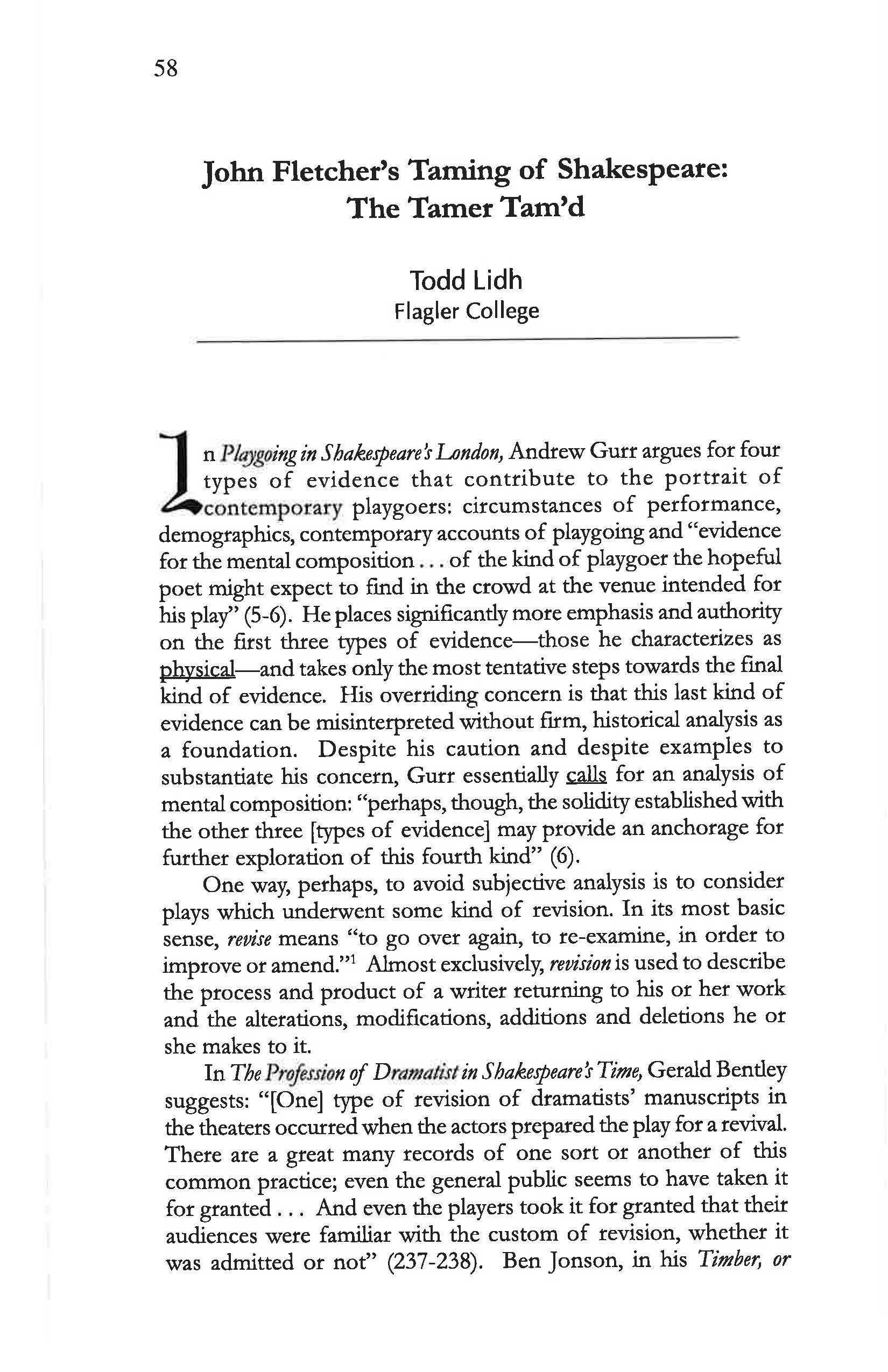John Fletcher's Taming of Shakespeare: The Tamer Tam'd
Main Article Content
Abstract
In Playgoing in Shakespeare’s London, Andrew Gurr argues for four types of evidence that contribute to the portrait of contemporary playgoers: circumstances of performance, demographics, contemporary accounts of playgoing and “evidence for the mental composition…of the kind of playgoer the hopeful poet might expect to find in the crowd at the venue intended for his play” (5-6). He places significantly more emphasis and authority on the first three types of evidence—those he characterizes as physical—and takes only the most tentative steps towards the final kind of evidence. His overriding concern is that this last kind of evidence can be misinterpreted without firm, historical analysis as a foundation. Despite his caution and despite examples to substantiate his concern, Gurr essentially calls for an analysis of mental composition: “perhaps, though, the solidity established with the other three [types of evidence] may provide an anchorage for further exploration of this fourth kind” (6).
